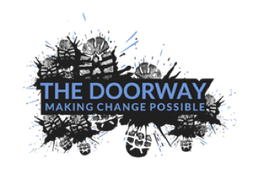Doorway (The Backdoor)

The Doorway is located in Calgary, Alberta on the traditional territory of the Siksika, Kainai, Piikani, Iyarhe Nakoda and the Tsuut’ina Nations as well as the Metis Nation of Region 3.
In the late 80’s The Doorway piloted as an experiment in social change addressing young people living on the streets in Calgary.
A sociological frame started with learning directly from the young people.
An understanding of the differences between street culture and mainstream culture led to an awareness that the definition of ‘on the street’ was and still is today different than ‘homeless’.
‘On the street’ does not refer to a socio-economic condition or environmental circumstance. Rather, it describes a belief system and a conceptual perspective. The streets aren’t under your feet; they’re in your scalp. Helping young people transition off of the streets involves changing the way they view themselves and the world around them. -Street Culture 2.0. An Epistemology of Street Dependent Youth, JT (Jerry) Fest
The Doorway Approach engages both young people living on the streets and mainstream community members in a self-determined planning process and cross-cultural exchange to make these lasting changes.
The Process:
The Doorway process is based on a step by step contracting process. Participants choose each successive step they need to take to get off the streets. Participants use MYPLAN to write their plan of action. They then discuss it with a volunteer or staff member. Genuine conversation is key. This planned step is their contract, and commitment to themselves. Participants are paid a $15 incentive for each contract they negotiate to a maximum of 8 steps per month.
The Success:
Young people define benchmarks of success as the ability to find and sustain employment and a safe place to live. They also recognize they have acquired planning and problem-solving skills which they use to move forward in their lives and to feel hope in their futures. Since 1988, a consistent average of 7 out of 10 participants achieve personal goals to leave the street culture/economy.
